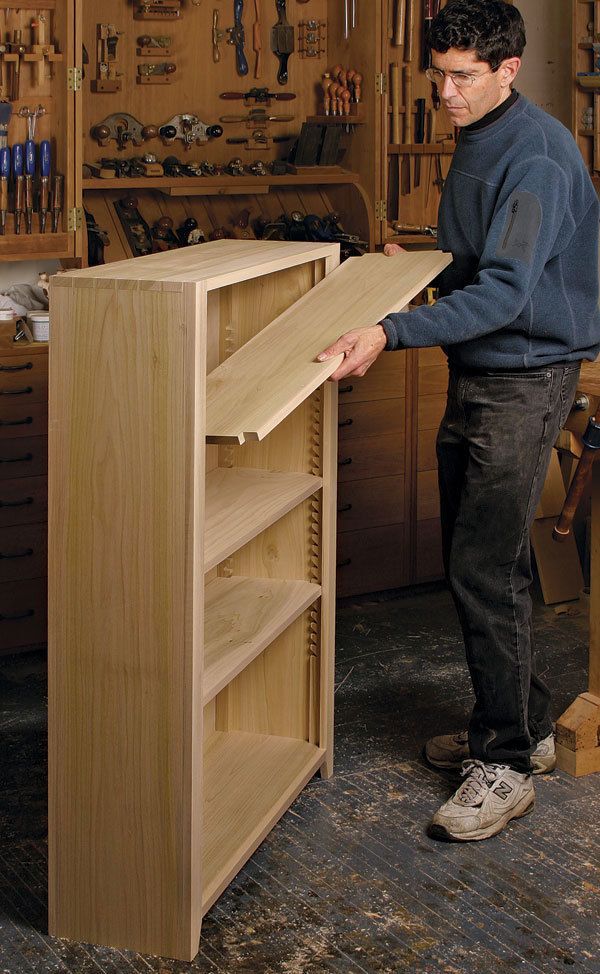Building Bookshelves to Last
How to support loads of any size and weight for years to come
Synopsis: Bookshelf design employs a delicate dance between two goals — strength and beauty. Factors such as shelf dimensions, stock thickness,and the method used to mount the shelves come into play. These guidelines by furniture maker Jeff Miller will help you build shelves that look good and are strong enough to handle a load of books. Included is a chart to help calculate shelf sag, and an introduction to an online program called the Sagulator. Miller also explains various methods for securing shelves. For fixed shelves, these include dadoes, rabbeted dadoes, biscuits, sliding dovetails, and screwed cleats. For adjustable shelves, mounting methods include shelf pins, hidden wire supports, and wooden and metal shelf standards.
From Fine Woodworking #190
Everyone can use a few more shelves. Indeed, in many homes, an available shelf can be as difficult to find as the TV remote. So if you build a set of bookshelves, they’ll probably be filled as soon as the finish dries.
Bookshelves can work in any room. You can make them free-standing or built-in. They can be big or small. And they can take any form, from simple screwed-together and painted plywood for use in a utility room, to sophisticated formal library shelves made from beautiful hardwoods.
A shelf should look good A successful bookshelf design must achieve a balance between appearance and function. A shelf with the perfect look might not be adequately strong. That often means making changes as you work out the design. A good approach is to start by writing out a wish list that summarizes your ideal shelf design. The list should include the shelf depth, a factor determined by the width of the books going on the shelf. Next, choose a shelf length (bookcase width). Then, choose a shelf thickness—3⁄4-in. stock is readily available, but let your eye make the final determination. After that, decide if you want the shelves to be fixed, adjustable, or some of each. Finally, choose a joint or mounting system that offers the look you want.
The design process is just beginning once you’ve worked out your bookshelf design “brief.” Now you must determine if your initial choices will be strong enough. If not, you’ll have to make some design changes. But before we get to that, it helps to understand how a shelf reacts to load.
Sag is the main enemy As the load on a shelf increases, the weight eventually reaches a point where the shelf bends, or sags. The same factors that affect appearance also affect shelf sag: the thickness, width, and length of the shelf; the wood species used; and the method used to mount the shelf.
As a general rule, our eyes won’t notice sag if it’s less than 1⁄32 in. (0.031 in.) per foot. With time, even if the contents don’t change, a shelf’s initial sag could increase by 50% or more as the wood fibers “tire.” Wood engineers call this “creep.” To be on the safe side, design shelves to limit any initial sag to no more than 0.02 in. per foot under a load of full-size books.
For the full article, download the PDF below:
Fine Woodworking Recommended Products

Jorgensen 6 inch Bar Clamp Set, 4 Pack

Starrett 12-in. combination square

Stanley Powerlock 16-ft. tape measure





















Comments
Where is the online page for the Sagulator? Your pdf says it can't be found. Link Broken? Request you reinstall the link or make the program available for download.
Here's the proper home for the sagulator:
http://www.woodbin.com/calcs/sagulator/
Log in or create an account to post a comment.
Sign up Log in